How did PhonePe succeed and become the most popular payment app in India?

How did PhonePe succeed and become the most popular payment app in India?
In today’s environment, comfort and ease are prioritised, and the banking sector has seen a significant change in this area. Because carrying cash was so inconvenient, digital payments and mobile wallets were developed. PhonePe has become one of the leading players in this market.
The preferred method for paying for groceries, utilities, phone recharges, etc., is through mobile apps. Even huge transactions are now carried out digitally rather than in cash, which has eliminated physical world risk factors and wholly modernised the banking and finance industry.
One such payment software that has made millions of Indians’ life easier is PhonePe. The Indian UPI-based app PhonePe, which was founded in December 2015, was acquired by Flipkart and its parent company Walmart a year after it was created. Since then, it has ushered in an era of growth and expansion for itself and has never looked back.
Currently, PhonePe’s holdings are owned by Flipkart in an amount of 87 per cent, its parent company in another 10 per cent, and the remaining stakes are held by Flipkart’s minority shareholders.
PhonePe is praised as dominating the Indian digital payments business. The app enables users to manage their bank accounts digitally, gain access to them whenever it’s convenient, and use their money any way they see fit.
To make their digital payments, they can quickly link their credit and debit cards with a mobile wallet. Additionally, PhonePe allows for instant money transfers. There are many more cases when PhonePe seems to be essential—these are just a few.
According to sources from July 20, 2022, PhonePe, which is now headquartered in Singapore, would move its headquarters to India. Keep reading if you want to learn more about the Success Story of PhonePe, the Founders and Team, the Competitors, the Business Model, the Revenue Model, the Funding and Investors, and other topics.
How does PhonePe Work? | About PhonePe
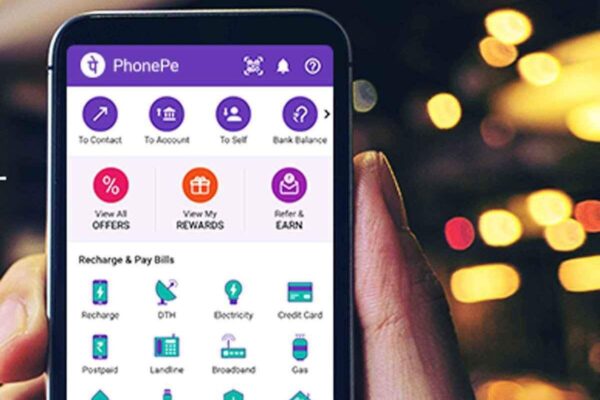
A digital payments business called PhonePe was established in December 2015 and is designed to support over 11 languages. It is touted as the first UPI payments app to surpass the billion transaction threshold and is one of the first payment apps to be established on the UPI platform.
The app enables users to send and receive money, check bank balances, make POS payments, acquire gold, and carry out a variety of operations, such as phone recharge, DTH payments, energy, gas, and other bill payments, using its app.
Additionally, one of the most popular UPI apps, PhonePe, which enables users to book rides, order food, make purchases, and more online, is accepted by the majority of Indian retailers.
The RBI has given PhonePe permission to function as an account aggregator. As a result, PhonePe will be permitted to freely communicate financial information with both financial information providers and users (FIUs) (FIPs). However, before sharing any data, the top digital payments app and merchant aggregation platform would first ask for permission from its users.
PhonePe has had its registered office in India for a while, but on July 20, 2022, a PhonePe representative announced that the company would move its headquarters from Singapore to India. However, Flipkart, which owns the majority of PhonePe’s shares, intends to remain its headquarters in Singapore and has no intentions to relocate.
How Does PhonePe Operate?
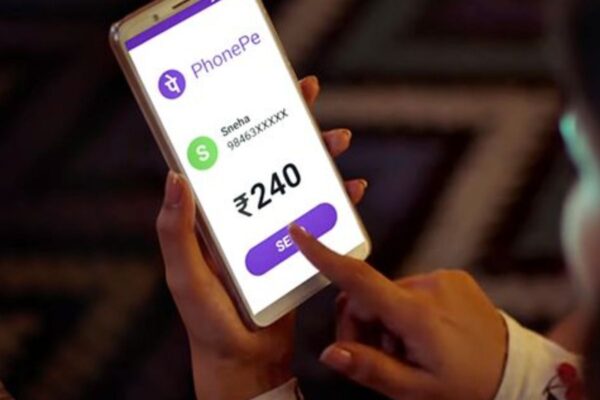
In the UPI fintech sector, PhonePe is a digital payment and wallet-based payments app. All we have to do is download the PhonePe software to our smartphones, link our bank accounts and phone numbers, and once these have been validated, we can begin using the app to conduct transactions. The associated bank accounts are directly connected to the PhonePe transactions. Additionally, since the PhonePe wallet is connected to a bank account, it does not need to be refilled once more.
PhonePe – Business
In just the last 12 months, digital payment transactions have grown by almost 76 per cent, with a large number of first-time users among them. According to estimates, India’s digital payments market will reach $700 billion by 2022. According to data from December 7, 2021, PhonePe is the market leader in this sizable digital payment sector in India with a market share of 46.3%, while Google Pay is in second place with a market share of 36.4%.
The Founders and Team of PhonePe
PhonePe was established by Sameer Nigam, Burzin Engineer, and Rahul Chari.
Sameer Nigam
President and CEO of PhonePe is Sameer Nigam. Previously, he was Flipkart’s Senior Vice President of Engineering. In addition to earning his MBA from “The Wharton School,” Nigam studied at the University of Mumbai.
Rahul Chari
The CEO and Founder of PhonePe are Rahul Chari. After finishing an internship at Sun Microsystems, he began working for Andiamo Systems Inc. as a software engineer. After that, Chari continued to work in management roles for a few more businesses, including Cisco Systems, Mime360, and Flipkart, where he held the title of Senior Software Engineer.
Burzin Engineer
PhonePe’s CRO is Burzin Engineer. Before starting PhonePe, he spent two years as the Vice President of Engineering and Operations at M-GO. Additionally, he has experience working with Shopzilla.com, mime360.com, and Flipkart, where he served as the Director of Engineering. Engineer studied at the University of Mumbai for his undergraduate degree before earning his master’s in computer science at the University of Southern California.
Currently, PhonePe employs over 3.5k people nationwide.
The Beginning of PhonePe
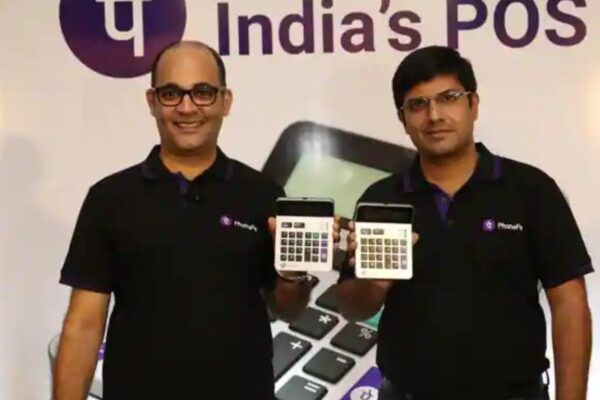
Sameer Nigam, Rahul Chari, and Burzin Engineer, three former employees of Flipkart, founded PhonePe in 2015. It was an app with enormous growth potential, which Flipkart recognised immediately. It seized the chance to acquire it the very next year, giving its parent company, Flipkart, back its former employees’ creation.
Mission and Vision for PhonePe
PhonePe was established to serve as a global, frictionless, and secure mobile payments network. “To construct a broad, scalable & open transaction environment that produces the maximum positive impact for all stakeholders,” reads PhonePe’s mission statement.
Name, tagline, and logo for PhonePe
Since PhonePe is primarily a payments app, its moniker is remarkably similar to that of its competitors Google Pay, Paytm, Amazon Pay, and others. The word “paid” is used intriguingly by PhonePe, though. PhonePe spells it as “Pe,” invoking the Hindi meaning of the word and making “PhonePe” sound like “on the phone,” which is also appropriate given that PhonePe is a mobile app!
In order to help consumers immediately remember the Hindi meaning of their brand name, PhonePe used purple as the primary colour and created the logo utilising the Hindi font for the letter “Pe.”
PhonePe’s slogan is “Karte Ja. Badhte Ja,” which translates to “Keep doing, keep expanding” in a highly encouraging manner and alludes to the app’s transactions and the company’s growth.
Model for Business: PhonePe
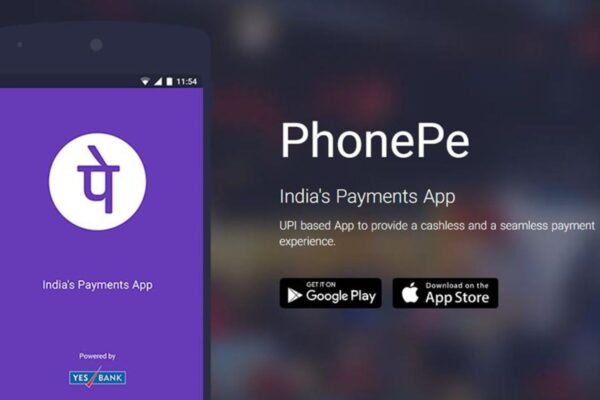
A UPI-based payment platform is PhonePe. The app makes it possible to move money between banks. It also includes other features. PhonePe sells goods and a few services like grocery, insurance, and cuisine via its smartphone app.
The company’s responsibility is to market its products. Mobile phone recharging is possible using PhonePe. Gas and electricity bills can also be paid with PhonePe. A POS device that PhonePe introduced is currently present in practically all shops, including Kirana stores in India.
As of right now, PhonePe is a licenced insurance agency. The Insurance Regulatory and Development Authority of India granted the digital payments and merchant aggregator a licence for insurance broking (IRDAI). PhonePe will now be able to provide insurance solutions from a range of insurance companies to its clients. Additionally, it can provide its sizable user base with customised insurance solutions.
PhonePe’s Business Model PhonePe’s Business Model
The marketing of numerous products on PhonePe’s app generates revenue for the company. Additionally, it receives money from a partner via the “Switch” platform. When customers recharge their phones, the telecom firms typically pay a commission to the recharge points/centres.
In the same way, PhonePe also gets paid when users use the app to recharge their phones. Every online purchase consumers make through the company’s app generates a commission for the business. The user base of PhonePe is enormous. Today, data is the secret to financial success.
The database provides a number of insightful data points. The amount and timing of consumer money transfers affect their payment habits. Along with the retailer’s or store’s information, one can also infer a customer’s purchase habits. Through discounts and other offers on its app, PhonePe continues to increase the number of its customers.
According to reports dated October 23, 2021, the top digital payment platform would start applying processing fees of up to Rs 2 to any mobile recharges done through its digital app. PhonePe has planned to charge Re 1 for any recharges between Rs 50-100 and Rs 2 for any recharges above Rs 100, despite the fact that it is currently only doing a “limited scale experiment,” as the Fintech giant has dubbed it. Recharges under 50 rupees are still considered to be free, though. As part of the trial, it has been noted that most customers either pay nothing or only Re 1.
Since PhonePe is the first company in the digital payments industry to introduce the idea of processing fees, many users across the nation are reportedly upset about it. These users have voiced their complaints via tweets and other social media platforms and may even decide to stop using PhonePe.
Competitor Paytm to PhonePe also opposed the idea of charging customers, reportedly stating, “Trust develop Karna Bhi Ek process hai. Process ki keemat nahi iss.
Startup Challenges for PhonePe
Due to the industry’s relative youth and lack of development, getting started was, in fact, a significant difficulty for PhonePe. But the acquisition of PhonePe by Flipkart brought everything to a close.
On January 14, 2017, ICICI bank blocked PhonePe because the transactions did not adhere to NPCI regulations. Even though the regulatory body first gave ICICI the go-ahead to accept UPI transactions through PhonePe on January 19, 2017, NPCI later confirmed that the digital payments service provider had, in fact, broken the UPI rules. During the same time frame, Airtel was another company that prohibited PhonePe transactions on its platforms.
Due to this, PhonePe had to stop operating on the Flipkart website, which enabled the firm to comply with the provisions of the revised NPCI ruling. By February 2017, the digital payments app had overcome all of these issues with ICICI and Airtel.
Employees of Paytm burned PhonePe QR codes.
In response to the alleged burning of PhonePe QR codes by Paytm staff, PhonePe filed a police report. The Surajpur Lakhnawali police station received a complaint regarding this Greater Noida event. As of August 1, 2022, the first thing that the PhonePe officials saw before filing a complaint was a video of the pile of PhonePe QR codes.
In response, a Paytm representative stated that the three employees, including a former PhonePe employee and the Paytm Area Sales Manager (ASM), had already been suspended after being identified. The Paytm representative added that the company “always upholds the highest levels of work ethics” and doesn’t allow “any form of wrongdoing.”
Funding And Investors For PhonePe
Over the course of 14 rounds, PhonePe has raised $1.99 billion in investment. On April 15, 2022, PhonePe Private Limited Singapore, the business’s Singapore-based subsidiary, gave the company a further $297 million injection. In addition to the $700 million that was disclosed in December 2020, PhonePe just closed a fundraising round worth $350 million from Walmart.
Since PhonePe was acquired by its parent company, Walmart, Flipkart has been providing ongoing investment, and Walmart has frequently joined the company.
Purchases at PhonePe
Up to this point, PhonePe has purchased 5 businesses: Indus App Bazaar, Zopper, GigIndia, OpenQ, and WealthDesk. According to sources dated May 18, 2022, the Walmart-backed company bought OpenQ and WealthDesk in a combined purchase totalling $75 million.
Bloomberg had previously reported that OpenQ would be acquired for $25 million, while WealthDesk would be acquired for roughly $50 million. According to the agreement, both organisations will continue to operate independently even after the acquisition, where both the founding teams and founders would join PhonePe.
The previous acquisition, which happened on March 22, 2022, was GigIndia. PhonePe had planned to purchase Indus App Bazaar on May 19, 2021, for a sum estimated at $60 million. However, the existing investor Affle objected. Therefore it wasn’t finished at that time.
On July 29, 2022, PhonePe made its final announcement regarding the acquisition of OSLabs, the parent company of Indus, stating that the three parties involved—PhonePe, OSLabs, and Affle Global—had “amicably resolved the matter.” PhonePhone then confirmed that it would pay a premium to acquire Affle’s entire stake, which was estimated to be worth $65 million.
ESOPs for PhonePe
An ESOP repurchase of around Rs 135 crores has been announced by PhonePe. The company’s leadership will be able to sell 10% of its vested stock options thanks to the liquidity event, as announced on November 19, 2021. On the other hand, current staff members are permitted to sell up to 25% of their vested options. The PhonePe founders, however, have already made it known that they would not be participating in this buyout.
PhonePe – Collaborations
In the seven years that PhonePe has been in business, there have already been far too many partnerships.
On July 2, 2021, PhonePe and Axis Bank will collaborate on a UPI multi-bank concept. It and Yes Bank previously worked together.
On July 7, 2020, Ola and PhonePe announced their partnership, enabling Ola payments using the PhonePe app and wallet.
On July 6, 2021, PhonePe and Flipkart will collaborate to digitise cash-on-delivery payments.
On September 10, 2021, PhonePe was designated as KBFC’s primary payment partner.
On December 20, 2021, Edelweiss General Insurance partnered with PhonePe in order to provide digital auto insurance solutions.
Competitors of PhonePe
Google Pay, Amazon Pay, Whatsapp Pay, Juspay, PCKT, Paytm, MobiKwik, BharatPe, Roomeo, and mobilPay are PhonePe’s leading rivals.
GPay is a digital wallet platform and online payment service created by Google. GooglePay offers contactless payment methods and was first introduced in 2011.
The Seattle-based retailer Amazon, which was formed in 2007, owns the online payment processing business known as Amazon Pay.
The social media behemoth Facebook, which owns Whatsapp, has created Whatsapp Pay to enable users to give and receive money while chatting.
Juspay is an online payment system for mobile devices. In 2012, Juspay was established. A fintech business is PCKT. It offers customers payment services. 2003 saw the founding of PCKT.
Paytm invented the Indian e-commerce payment mechanism. It is a provider of financial technologies. Paytm was established in 2010. Indian business MobiKwik was founded. It has a payment system based on mobile devices. MobiKwik was established in 2009.
PhonePe – Development
Founded in December 2015, PhonePe. Flipkart purchased PhonePe in 2016. The app, which Flipkart purchased in 2016 for between $10 and $20 million, has a reported price of more than $5.5 billion by the end of 2021. This expresses the expansion of the business directly.
The first UPI-based app to surpass 10 million downloads was PhonePe in 2017. It frequently appears in the list of the best finance apps on Google Play and the Apple App Store. Over time, PhonePe surpassed all other UPI transaction providers in India. It achieved the milestone of 1 million app transactions per day in 2017. On its platform, PhonePe introduced “micro applications” in 2018.
According to news from November 17, 2021, the business has been acclaimed as the most well-known provider of digital payments services and has further recorded $2 billion in monthly transactions in October 2021. In addition, PhonePe was regarded as the second-largest consumer-facing fintech business, valued at $5.5–5.7 billion, behind Paytm, which was then valued at over $16 billion following its private fundraising round.
When it came to growth in 2019, PhonePe was one of the top performers. PhonePe led the year in growth with 857.22%. In the year 2018, all of the top payment apps saw a growth of 88%.
Transaction Report for PhonePe
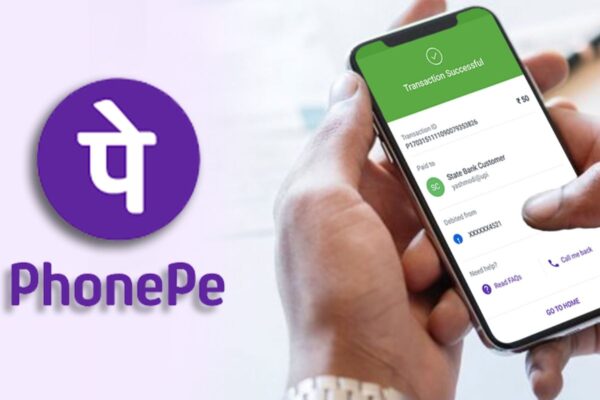
Regarding its transactions and the growth the business has had, PhonePe has broken several records. PhonePe is praised for becoming the first UPI participant to complete 1 billion, 1.5 billion, and now 2 billion transactions. In the market for UPI apps, PhonePe has been the market leader in terms of transaction volume and value, market share, registered users, and more.
With close to 1.5 billion total transactions in the month of July 2021, PhonePe broke previous records. Google Pay, on the other hand, crosses the 1 billion transaction threshold for the first time. In the UPI ecosystem, as of the month of June 2021, PhonePe held a 46% share compared to Google Pay’s 34.6%. As of July, PhonePe held a market share of 45.94% inside the UPI ecosystem, compared to Google Pay’s market share of 34.45%.
In terms of market share, PhonePe has already outpaced Google Pay, its main competitor. When the National Payments Corporation of India released its data on the total number of transactions in June, the former reached new heights.
According to information released by the government, in the month of June 2021, PhonePe registered 1292.71 million transactions totalling 262,565.88 crores, while Google Pay came in second with 972.26 million transactions totalling Rs 207,287.73 crores. When PhonePe crossed 2 billion transactions in 2021 in October, it marked another significant milestone.
Smart Speaker PhonePe
Following the incident with the burning of a QR code by Paytm staff, PhonePe officially debuted the Smart Speaker. The PhonePe Smart Speaker was introduced to simply and accurately track payments made at retail locations. As of August 2022, these speakers have already been introduced in more than 8 Indian cities, and more than 100K units have been installed for use by PhonePe merchants.
Payment alerts are offered by the PhonePe Smart Speakers in over 11 different Indian languages. These are installed at the merchants’ doorsteps for a low initial cost of just Rs 50 and a low monthly rental cost of Rs 50, and their battery life is up to 4 days.
Financials via PhonePe
According to sources dated October 15, 2021, PhonePe effectively increased its revenue from operations by 85.5% to Rs 690 crores in FY21, from Rs 372 crores the previous year. The Bengaluru-based digital payments giant generated the majority of its revenue with the help of the platform’s payment services and other ancillary services. Another significant source of income for the top payments company was its insurance division, which brought in about Rs 3.85 crores.
Throughout FY21, PhonePe’s losses remained consistent at Rs 1728 crores. However, the company’s EBITDA margin significantly increased to -219.9%.
PhonePe’s Upcoming Plans
By 2022, the corporation hopes to increase its profitability. Additionally, PhonePe assists its users in finding new things online. It involves providing such goods and alerting individuals about when, where, and which stores are open. This is a special offer. For its customers and the merchants it works with, PhonePe has developed a new chat feature. In the next two years, the payments platform is on course to accomplish something truly remarkable.
Edited by Prakriti Arora




